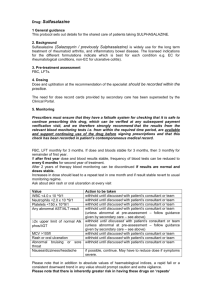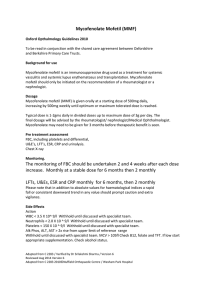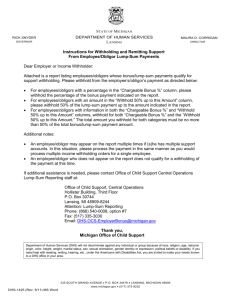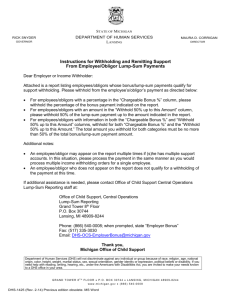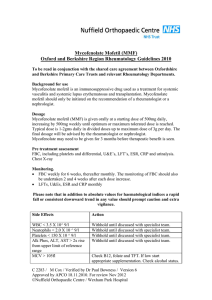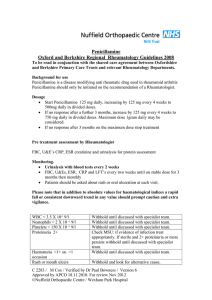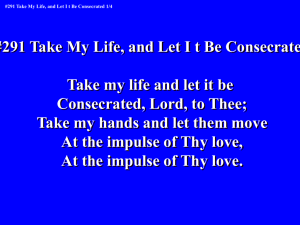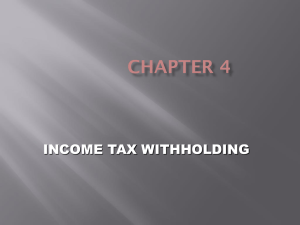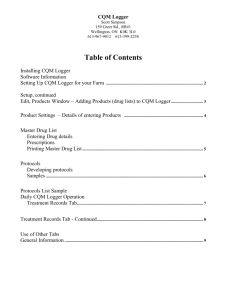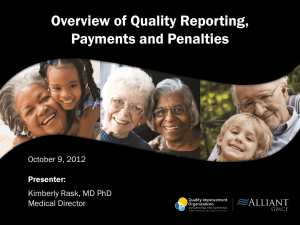演講講義
advertisement
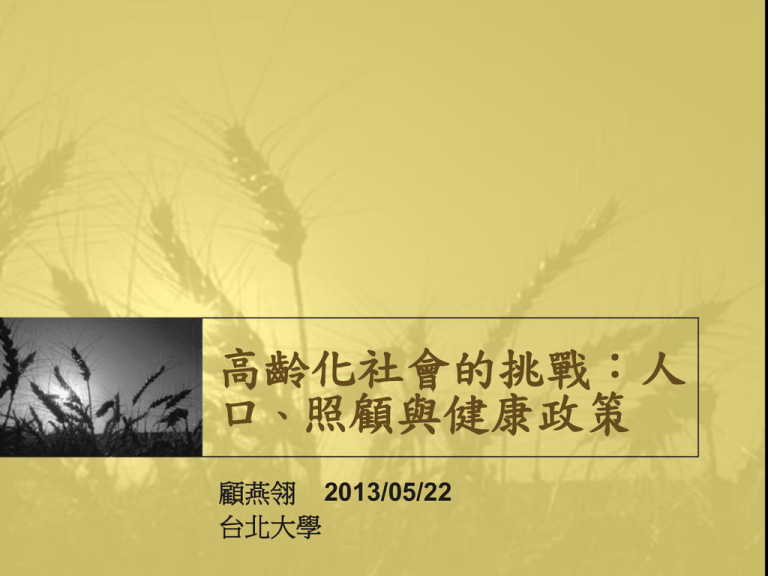
高齡化社會的挑戰:人 口、照顧與健康政策 顧燕翎 2013/05/22 台北大學 • • • • • • • • • • 人口 人口總數vs人口結構 依賴人口(dependency ratio) 勞動參與vs 照顧需求 照顧政策的變遷 健康產業與政策 : productive aging 健康vs醫療 運動vs勞動 工作/學習vs休閒 自然死亡 人口總數太多?還是太少 全球 台灣 World Population 人與地球 http://www.worldometers.info/world-population/ 地球 土地、水、糧食、能源有限 70.8% 水 17% 可住 人口無限增加 4%可種作物 缺冰 上不了岸 台北湖 「環境難民<<氣候難民」 587萬 977萬 難民物種 生態崩潰 1141萬人 <100m 的平原 泡海水的比率 25% 39% 58% 北歐5國人口 = 台灣人口 人口成長 環境負荷 •人口成長、經濟發展、生產、消費 環境污染 •生態環境惡化 威脅健康、生命,在污染嚴重的 環境中,人們容易產生急躁、焦慮、憤怒行為 •集居都市,人口密集 都市熱島現象,傳染病容易 規模爆發 •活動時產生大量廢氣、廢水、廢棄物及噪音 生活品質,進一步污染自然環境 •溫室效應 地表溫度增,海平面升 降低 台灣人口年齡結構之變遷 1920-2046 依賴人口的定義 • 依賴比/扶養比(Dependency Ratio)= • 0~14歲人口+65歲以上人口 • 15~64歲人口 • • 經濟生產 照顧工作: 社會照顧 醫療照顧 跨國勞動參與率的年齡差異(I) 100 男性 90 80 60 50 40 韓國 30 日本 20 台灣 10 德國 年齡層 以 上 65 -6 4 60 -5 9 55 -5 4 50 -4 9 45 -4 4 40 -3 9 35 -3 4 30 -2 9 25 -2 4 20 -1 9 0 15 勞 動 參 與 率 ( % ) 70 跨國勞動參與率的年齡差異(II) 100 女性 90 80 60 50 40 德國 30 台灣 韓國 20 日本 10 年齡層 以 上 65 -6 4 60 -5 9 55 -5 4 50 -4 9 45 -4 4 40 -3 9 35 -3 4 30 -2 9 25 -2 4 20 -1 9 0 15 勞 動 參 與 率 ( % ) 70 •照顧政策 名詞、定義與議題 • • • • • • • • • 高齡化社會 ageing society: 65+ 7% 高齡社會 aged society : 65+ 14% 超高齡社會 super-aged society : 65+ 20% 年輕老人 Young old: 65-74 中老人 Middle old: 75-84 老老人 Old old: 85+ 正式照顧 非正式照顧 • • • • • 社會照顧 vs 醫療照顧 營利 vs 非營利 中央 vs 地方 Creative vs proortional 機構式照顧 vs 居家/社區照顧 • 許多人都得到一點 vs 少數人得到許多 北歐各國機構照顧占65歲以上 人口之百分比(1984-2005) 1984 1996 2005 Denmark 7.2 8.4 8.3 Finland 6.7 6.6 6.9 Norway 10.5 9.4 11.7 Sweden 9.5 8.2 7.0 • 老年照顧服務的各種模式 • • • • • 家庭協助服務 照顧住宅 社區照顧中心 家庭照顧服務(整合社會與醫療照顧) 非正式照顧及混合治理模式 私人家庭中主要照顧者年齡 主要照顧者年齡 18-49 years 百分比 30 % 40-64 years 33 % >65 years 39 % Source: Vaarama et al 2003b. 照顧服務的補助方式 • 服務券2004 醫療與社會服務券法2009 • 2009 使用者3000人增至 7000 • 抵稅 • 1997試辦 2001立法 最高3000歐元/人/年 增加工作機會 增加合法報稅 • 照顧津貼 1982 353.62歐元 非正式照顧支持法2005 2011最低 1990-2009 增照顧者78.2% 增老人30% •自然死亡: • Living Will(生命意願書) • 自然死亡法 安寧緩和醫療條例 • 自然死亡法安寧緩和醫療條例 I order that in case I, as a consequence of a serious illness or accident, loose my legal capacity on account of e.g. unconsciousness, or infirmity due to old age, all modes of treatment artificially maintaining my vital functions shall be excluded, unless reliable reasons exist for the possibility that I would recover. However modes of treatment mentioned above, may be applied for elimination or alleviation of serious symptoms. Giving intensive care to me is to be allowed only on the condition that reliable reasons exist for the possibility that this kind of treatment will have a result better than a merely short prolongation of life. In case a treatment with a prospect of recovery has been started 26 but proves to be futile, it has to be discontinued immediately. END-OF-LIFE DECISIONS: In cases where both (1) my attending physician determines that I am no longer able to understand, appreciate, and direct my medical treatment and (2) two physicians--one of whom is my attending physician and the other is qualified and experienced in making such diagnosis-have personally examined me and have diagnosed and document in my medical records that I am either terminally ill or that I am in a state of persistent unconsciousness with no reasonable expectation of recovery, I direct that my health-care providers and others involved in my care provide, withhold, or withdraw treatment in accordance with the choices I have stated below. The word "Withhold" shall be used to mean both withholding the treatment if it has not yet been given and withdrawing the 27 treatment if it is currently being administered. * Artificially supplied nutrition and hydration (including tube feeding or food and water) * Surgery or other invasive procedures (i.e., those where medical instruments must enter the body) * Heart-lung resuscitation (CPR) * Antibiotics * Kidney or Renal dialysis * Mechanical ventilator (respirator) * Chemotherapy and other radiation therapy * All other "life sustaining" medical procedures that are merely intended to keep me alive without reasonable hope of improving my condition Withhold Withhold Withhold Withhold Withhold Withhold Withhold Withhold 28 * 人工供應營養和水份(包括鼻胃 管餵食) * 手術或其他侵入性手段 (醫療 工具進入人體) * 心肺復甦術(CPR) * 抗生素 取消 取消 取消 取消 * 洗腎 取消 * 人工呼吸器 取消 * 化學治療及放射線治療法 *所有其他無法改善病情,只是延 續生命的 醫療手段 取消 取消 29
